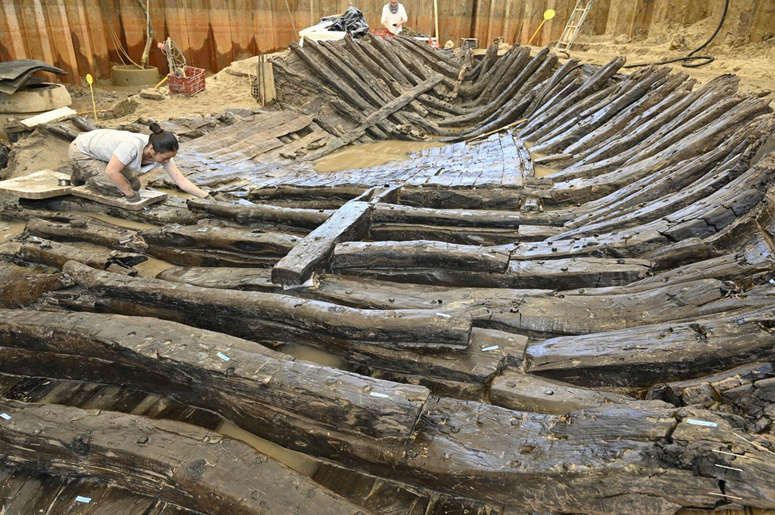Archaeologists seek to salvage a 1,300-year-old shipwreck

French archaeologists have begun studying an “extremely rare” shipwreck dating back about 1,300 years, which was discovered nearly a decade ago but has remained buried until now due to its fragility.
According to the French National Institute for Preventive Archaeological Research (Inrap), the wreck is so fragile that air can destroy the wooden remains.
The ship is about 12 meters long, and according to radiocarbon tests, it was built between 680 and 720 AD, and it is “an exceptional testimony to the naval architecture of the High Middle Ages.” It could sail both rivers and the Atlantic coast of France.
The shipwreck, which was discovered near the French region of Bordeaux in 2013, consists of beams that had not been in contact with oxygen or light for a long time, which led to them drying out and splitting.
However, scientific teams spray it with water every 30 minutes until each of the 200 pieces can be carefully removed and submerged in water.

So fragile that the air can damage it.. Archaeologists seek to save a 1,300-year-old shipwreck
Currently, the ship's final destination has not yet been determined, but the team may cover the rafters with resin for preservation or perhaps rebury the wreckage where it was found.
The ship was found buried in the sedimentary bottom of a stream, and is believed to have been used to ship goods through the ancient passage of the Garonne River, a river located in southwestern France and northern Spain.
But archaeologists say the ship was strong enough to travel as far as the Atlantic coast.

According to the French National Institute of Preventive Archaeological Research, which is involved in the work, the remains will be completely cleaned and documented by specialists through photography and 3D restoration.
Topography (topography) and recording of different pieces of wood. It will be dismantled and numbered piece by piece.
This disassembly will allow for a detailed analysis of the boat's construction, a process essential for identifying the associated naval architectural traditions.
“The excavation and dismantling of the wreckage should be completed by mid-September,” Lauren Grimbert, who is leading the excavation, told NBC News. “At the moment we are on schedule and every piece of wood dismantled teaches us more about early medieval shipbuilding techniques.”
She continued: “To limit the deterioration of the wood, especially at this time, with the heat wave in southwestern France, we water the debris every 30 minutes.”
Source: Daily Mail

